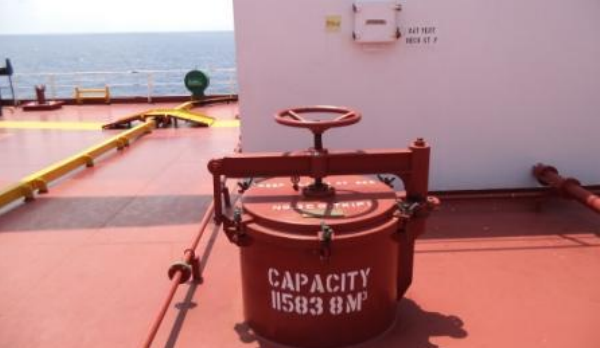Drills have always been considered as an effective way of training personnel on board to respond during emergencies. Safety Management Systems need to also include clear instructions regarding rescue from enclosed space drill.
With regards to enclosed space drills, from 1 January 2015 all persons involved in enclosed space entries are required to take part in enclosed space entry and rescue drills at intervals not exceeding two months.
The following key stages and their applicable actions is important to be followed in real emergencies. The stages involve requirements for Officer in charge, Rescue Team, First Aid Team, BA controller.
Stage #1 – Notification
A general alarm must be activated followed by an announcement about the type of emergency, the space and Muster Area.
Stage #2 – Mustering
Firstly, crew should muster in pre-determined area and Officer in charge (usually the Chief Officer) should check the crew for appearance and equipment.
During this stage, it is important to brief the Teams (specially the rescue team) for the space they will be enter. If a plan or drawing of the space is available, to be used as guidance in order to check free areas, hatches, doors, stairs or other specific items that may create difficulties to movement and rescue.
Officer in charge is responsible to obtain the enclosed space entry permit, in order to authorize entering and rescue. The steps of SMS relevant procedure (Risk Assessment, atmosphere measurement etc) are to be followed prior entering. A detailed equipment and uniform check should also be contacted prior entering the space while communication means should be checked as well.
Stage #3 – Entering the Space
Once the permit has been issued, and equipment check and briefing have been completed, the Rescue team is ready to enter the space. It is important the BA controller to check the air pressure in the BA apparatus used by rescue team and mark the time of activation. More importantly, he has to inform Officer of charge continuously for remaining time.
Officer in charge can give permission for entering the enclosed space only after:
- Permit has been obtained
- Communication has been established between Rescue team / Officer in charge/ Bridge
- BA apparatus have been activated and checked for efficiency of air
[smlsubform prepend=”GET THE SAFETY4SEA IN YOUR INBOX!” showname=false emailtxt=”” emailholder=”Enter your email address” showsubmit=true submittxt=”Submit” jsthanks=false thankyou=”Thank you for subscribing to our mailing list”]
Stage #4 – Rescue
The Rescue Team Leader should guide the team to the possible casualty, taking all precautions for safe movement of team and evacuation of person to be rescued. In case of more than one possible casualty, the evacuation should be conducted on the basis one crewmember each time. If stretcher is required, this need to be communicated to Officer in charge while one individual from the rescue team to bring it at the scene.
Stage #5 – First Aids on Scene
The First Aid team should provide all necessary support to the casualty. If wounds are spotted due slip or fall, immediate actions to be conducted prior moving the victims to hospital. Oxygen bottles and masks to be ready for use in case the victim has no conscious or cannot breathe normally.
Stage #6 – MEDEVAC
In case of a serious situation, the ship’s crew may not be able to provide appropriate medical assistance due to equipment and knowledge limitations. In such cases, a Medical evacuation must be considered, with the collaboration of port authorities or nearest rescue center to a shore based medical facility or hospital.
Real Emergencies vs Drills
Considering the above stages when a real situation emerges, the below are guidance on what to check during rescue from enclosed space drill.
- Stage 1 – All items as per real situation to be checked, with the provision that the announcement will include the wording for drill (…..This a drill…..)
- Stage 2 – All steps to be followed as per real situation. Atmosphere check to be conducted as required and relevant risk assessment to be reviewed. The permit to be issued in a sample sheet for training purposes.
- Stage 3 – All steps to be followed. BA apparatus to be activated as required. Communication means to be checked for transmission.
- Stage 4 – For reality purposes Officer in charge is to use a crew member as a victim within the space (the space is to be ensured that is safe for human presence prior the drill). A medium size personnel is to be chosen to create a level of difficulty to evacuation. The stretcher is to be used for training purposes. If human dummy is available may be used, however it is different to carry a human.
- Stage 5 – The medical equipment is to be tested for functionality
- Stage 6 – Communication test can only be conducted (port and rescue center contacts availability) along with helicopter procedures on board (checklists, equipment, crew familiarization)
It is important to mention that both actual and drill situations should have an additional stage, for debriefing. During this stage, Officer in charge should analyze all actions for every stage, highlight any difficulties or non-conformances, identify equipment failures, provide guidance and encourage crew participation. Furthermore, drill evaluation is important, and Master should report results to company. Lastly. any lessons learned need to be analyzed on board and reported to Company accordingly for improvement and fleet notification.































































I strongly disagree with your comments in Stage 2.
In an emergency the atmosphere is to be considered dangerous and that is why we enter in BA. There must be no added delay to an ESR and stopping to recheck the atmosphere could be the difference between a sucessful rescue and a disaster. Worse – what about the presence of POCKETS OF GAS – these cannot be guaranteed not to be present so again, checking the atmosphere is not that useful. Then you omit that in the event of an alarm or emergency on the vessel all existing permits are to be CANCELLED.
It seems the SOLAS requirements for both an ENTRY and RESCUE drill have been combined – this is not the general interpretation, the entry requirements for ROUTINE entry are not the same as for EMERGENCY entry and should not be confused or combined.
I agree with you, we need fast action to rescue the victim to safe the life, not drama with checking bla bla….,
these checking atmosphere must be carried prior the victim entry and ensure safe for entry.